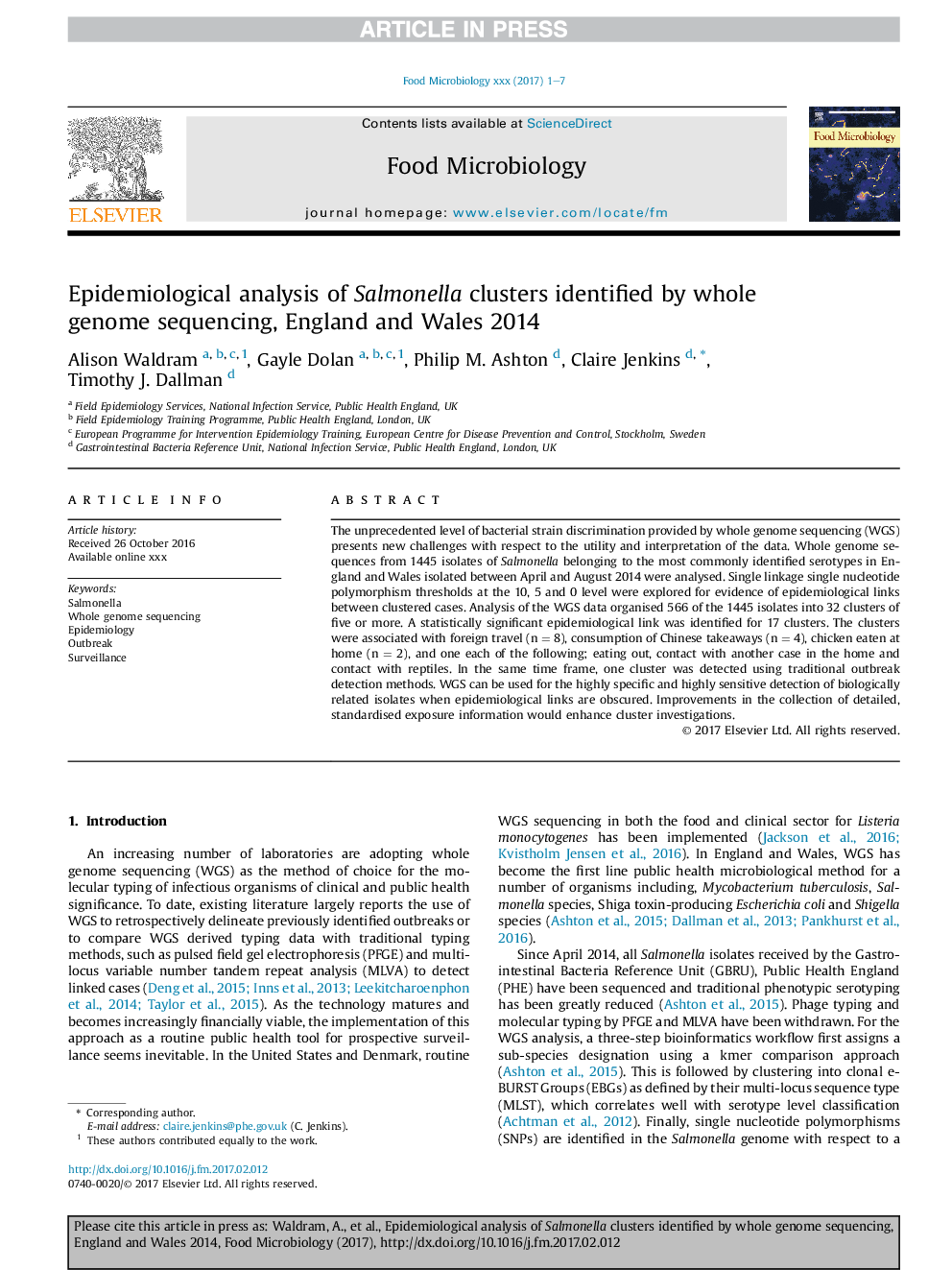| Article ID | Journal | Published Year | Pages | File Type |
|---|---|---|---|---|
| 8843596 | Food Microbiology | 2018 | 7 Pages |
Abstract
The unprecedented level of bacterial strain discrimination provided by whole genome sequencing (WGS) presents new challenges with respect to the utility and interpretation of the data. Whole genome sequences from 1445 isolates of Salmonella belonging to the most commonly identified serotypes in England and Wales isolated between April and August 2014 were analysed. Single linkage single nucleotide polymorphism thresholds at the 10, 5 and 0 level were explored for evidence of epidemiological links between clustered cases. Analysis of the WGS data organised 566 of the 1445 isolates into 32 clusters of five or more. A statistically significant epidemiological link was identified for 17 clusters. The clusters were associated with foreign travel (n = 8), consumption of Chinese takeaways (n = 4), chicken eaten at home (n = 2), and one each of the following; eating out, contact with another case in the home and contact with reptiles. In the same time frame, one cluster was detected using traditional outbreak detection methods. WGS can be used for the highly specific and highly sensitive detection of biologically related isolates when epidemiological links are obscured. Improvements in the collection of detailed, standardised exposure information would enhance cluster investigations.
Related Topics
Life Sciences
Agricultural and Biological Sciences
Food Science
Authors
Alison Waldram, Gayle Dolan, Philip M. Ashton, Claire Jenkins, Timothy J. Dallman,
